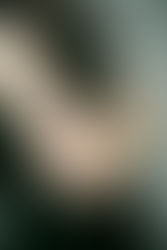Low Iron and Nutrition
- KJ Gracie
- Oct 18, 2017
- 2 min read
If you're feeling fatigued and struggling with low energy levels regularly, then it's likely you've thought about anaemia as the culprit. In fact, if you are a woman, of 'reproductive age' then you are particularly susceptible to having a low iron count.
Iron's primary job in the body is building haemoglobin, which helps your body carry oxygen around in the bloodstream. Without oxygen, your bodies cells will die; with a little oxygen, they will struggle on, making you feel terrible.
If you're suffering with a low iron count because your menstrual flow is so heavy, then I recommend a herb called Yellow Dock as a natural way of managing your periods. It can also help with cramping and digestive upset which is often cause by taking iron supplements. You can also try 'ClaryCalm' roll on essential oil blend.

There are some other side effects of taking iron supplements (including nausea, vomiting, dizziness and heart palpitations - and even increasing your risk of heart disease and cancer!) and there's the issue of overdosing. The human body has no way of removing excess iron, so it is better, where possible, to choose plant based sources for mild deficiencies (as the body can control whether to convert them into heme or not) and only use food based sources (such as raw grass fed beef liver) in moderate to severe cases. It's a very good reason to avoid iron supplements altogether whenever possible.
There are many causes for iron deficiency, so it's best to work with a doctor or nutritionist and address that issue, but in the mean time, here are some food rules that should help you manage a little better.
Foods you should try to avoid
Whole grains and bran
Soy (soya, edamame, natto, bean curd, tofu etc...)
Rhubarb
Tea
Coffee
Red wine
Sweet potatoes
Foods to consume regularly
Beetroot and fresh pressed beetroot juice
Chlorella and/or spirulina (you can buy capsules if you can't stand the taste.
Nutritional yeast (for B12, which helps you convert plant based non-heme iron into heme iron when needed)
Leafy green vegetables
Carrots
Beans and legumes
Squash
Citrus fruits
All raw fruits and vegetables - juice, juice, juice. If you don't own a juicer, you need one.

You can also try switching your sugar and sweeteners for honey. Honey is rich in copper, which helps to absorb iron properly.
Black strap molasses is also an excellent source of iron and essential vitamins and minerals that assist in iron absorption. In fact, one tablespoon has about 20% of your RDA of iron, and it's all bioavailable.








Comments